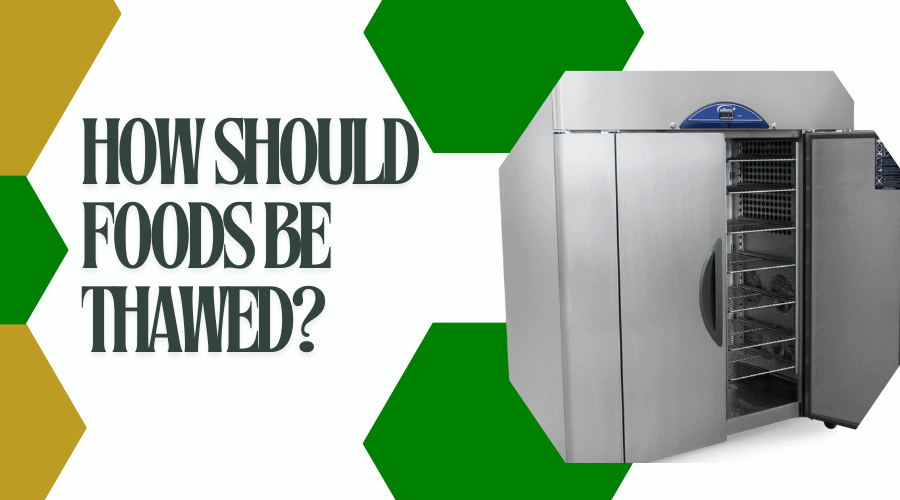
Sep 23,2024
Proper thawing is crucial for maintaining food safety and quality. It prevents bacterial growth, preserves texture and flavor, and reduces food waste. While traditional methods like refrigerators, cold water, and microwave thawing are standard, modern thawing machines offer a more efficient and effective solution.
Improper thawing has an unimaginable impact on bacterial growth, potentially causing foodborne illnesses. It can also affect foods' texture, flavor, and nutritional value. For example, meat thawed too slowly in the refrigerator may become tough, while meat thawed too quickly in the microwave can dry.
Refrigerator Thawing is one of the safest methods for thawing significant cuts of meat and perishable items. Place the frozen food in the refrigerator overnight, allowing it to melt slowly.
Cold Water Thawing: For smaller items or when short on time, cold water thawing can be used. Secure the frozen food in a leak-proof bag and dip it in cold water, changing it every 30 minutes.
Microwave Thawing: Microwave thawing is indeed the quickest method but may lead to uneven thawing and partial cooking. It is best for smaller portions and immediate cooking.
Thawing machines are specialized equipment designed to thaw frozen food quickly and safely. They are also the safest way and are used in commercial kitchens, food processing plants, and industries that require rapid thawing.
Thawing machines use controlled temperature and humidity systems to thaw food evenly. They maintain the food at a safe temperature to prevent bacterial growth, ensuring it is thoroughly thawed without compromising quality.
Speed and Efficiency: Thawing machines can quickly thaw large quantities of food, reducing downtime and increasing productivity.
Safety and Consistency: They provide uniform thawing, preventing partial cooking or cold spots. Their mechanism of thawing reduces the risk of contamination and ensures food safety.
Energy and Cost Savings: Thawing machines are more energy-efficient than cold water or microwave methods for large-scale operations. Automating the thawing process can also help reduce labor costs.
Preservation of Food Quality: Thawing machines maintain food's texture, flavor, and appearance by controlling humidity and temperature. This prevents freezer burn and ensures that the food retains its original quality.
Thawing machines are best suited for businesses in food production, hotels, and large-scale kitchens. They are ideal for efficiently thawing meats, seafood, and other bulk frozen foods. Industries such as catering, food service, and food manufacturing can use thawing machines to streamline operations.
Plan Ahead: Plan your meals to allow sufficient time for thawing.
Label and Date: Label and date all frozen food to track its freshness.
Avoid Thawing on the Counter: Thawing food on the counter can increase the risk of bacterial growth.
Thawing in Cold Water: When using cold water thawing, change the water every 30 minutes to maintain a cold temperature.

Thawing in the Microwave: If using the microwave, cook the food immediately after thawing.
Danger Zone: This temperature zone shows the range of temperatures that facilitate the growth of bacteria. Avoid leaving thawed food between 40°F and 140°F for more than two hours. Bacteria multiply rapidly in this temperature range.
Refreezing: Once thawed, do not refreeze food. This can reduce its quality and increase the risk of foodborne illness.
Thawing and Cooking: If you need to thaw food quickly, cook it immediately after thawing.
Energy Efficiency: Thawing machines are designed to be energy-efficient, reducing the overall energy consumption of food establishments.
Reduced Food Waste: Thawing machines can help reduce food waste by ensuring proper thawing and preventing bacterial growth.
Environmental Impact: Thawing machines can contribute to a more sustainable food system by minimizing energy consumption and reducing food waste.
HACCP Compliance: Thawing machines are a helpful way for businesses to comply with HACCP (Hazard Analysis Critical Control Point) standards, which are widely followed by the food industry to ensure food safety.
FDA Regulations: Thawing machines can also be used to comply with FDA regulations regarding food handling and safety.
Innovative Technology: Some thawing machines incorporate innovative technology, such as automated defrosting cycles and temperature monitoring systems, to optimize performance and efficiency.
Future Innovations: As technology advances, we expect to see even more innovative thawing machines offering improved capabilities and benefits.
By following these guidelines and considering the benefits of using thawing machines, you can ensure safe and efficient thawing practices in your home or business.
1. How can I thaw frozen meat safely?
One of the safest ways to thaw frozen meat is in the refrigerator. This allows the meat to melt slowly and evenly, reducing the risk of bacterial growth.
2. Can I refreeze thawed meat?
No, once meat has been thawed, it should not be refrozen. Doing so can reduce its quality and increase the chances of foodborne illness.
3. How long does thaw frozen meat in the refrigerator take?
The thawing time for frozen meat in the refrigerator depends on how large and thick the cut is. Generally, it takes about 24 hours per 5 pounds to thaw in the fridge.